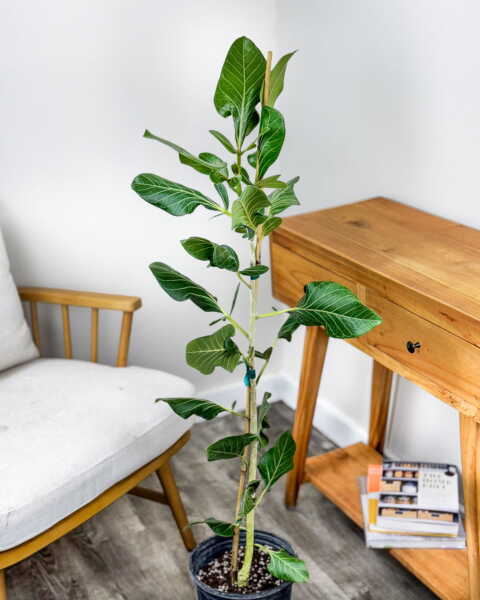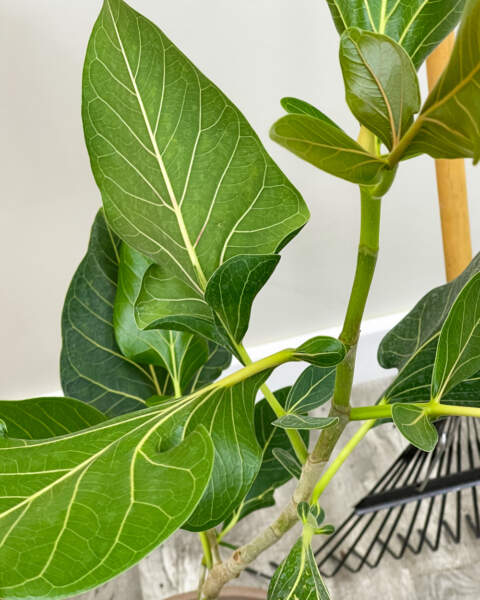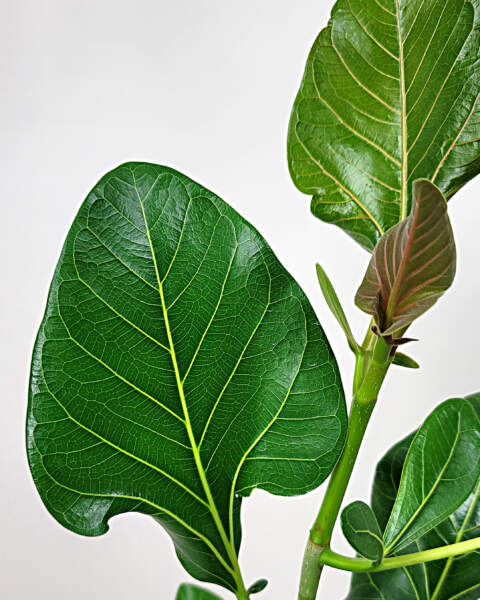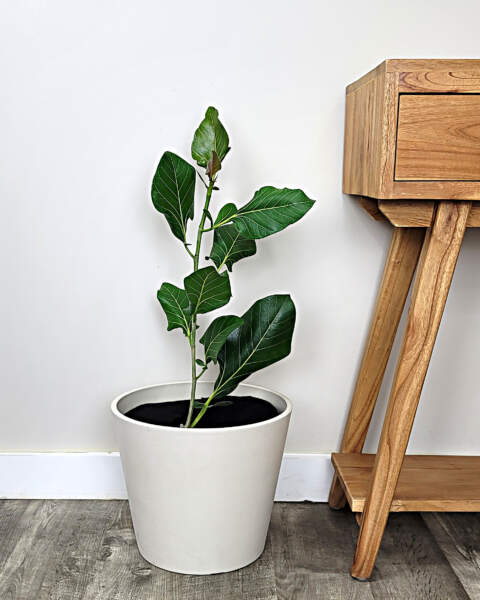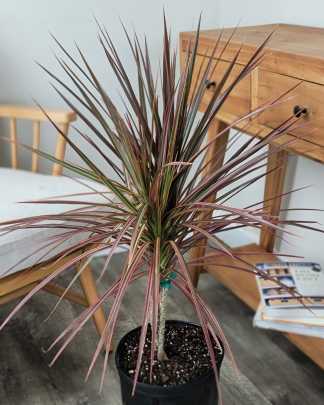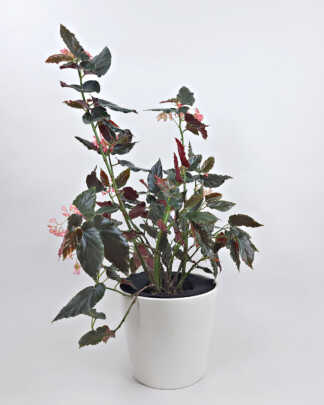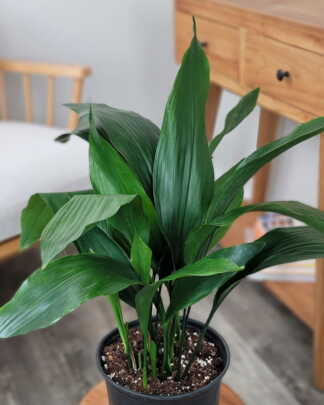Description
This Fig Tree has a Flair of its Own
Ficus ‘Sri Lanka’, often known as the Weeping Fig, is a magnificent houseplant with dark green, glossy leaves and a cascading growth habit that lends an elegant and serene touch to any indoor environment. Native to Sri Lanka and India, this member of the Ficus family enjoys a tropical environment. If you’re lucky enough to own a Ficus ‘Sri Lanka’, here is how to take care of it.
Caring for your Sri Lankan Ficus
Leaf drop is a common issue with Ficus ‘Sri Lanka’ and can occur due to various reasons such as underwatering, overwatering, drastic temperature changes, or low humidity. Identify the potential cause and adjust care practices accordingly.
Yellowing leaves, on the other hand, may indicate overwatering or poor drainage. Check the soil and watering routine and adjust if necessary.
Light
Ficus ‘Sri Lanka’ thrives best in bright, indirect sunlight. It adapts well to various light conditions but placing it near a north or east-facing window is ideal. Be cautious of direct sunlight though, as it may scorch the leaves and cause them to drop. Rotate the plant every few months to ensure even exposure to light, promoting balanced growth.
Water
When it comes to watering, the Ficus ‘Sri Lanka’ prefers a ‘drench and dry’ approach. This means you should allow the top inch of the soil to dry out before watering thoroughly. Overwatering can lead to root rot and leaf drop, which can quickly compromise the health of your plant. Using a moisture meter can be particularly helpful in determining when to water. During winter months, reduce the watering frequency as the plant’s growth slows down.
Temperature and Humidity
As a tropical plant, Ficus ‘Sri Lanka’ appreciates warmer temperatures, typically between 65 and 85 degrees Fahrenheit. Avoid placing it near cold drafts or heaters as sudden temperature changes can cause stress and lead to leaf drop. This ficus variety also enjoys high humidity. To mimic its natural environment, you can place the plant on a pebble-filled tray with water, use a humidifier, or frequently mist the plant.
Soil
Ficus ‘Sri Lanka’ needs well-draining soil to prevent waterlogging and root rot. A high-quality potting mix that contains perlite or vermiculite should work well. In terms of nutrition, feed your ficus with a balanced houseplant fertilizer every 4 to 6 weeks during the growing season (spring and summer). Use the fertilizer at half strength to avoid overfertilization, which can lead to salt build up and cause damage to the plant.
Pruning and Repotting
To maintain its shape and size, pruning is recommended. Prune in late winter or early spring, before new growth begins. Use a clean, sharp tool to cut back to the desired length, but don’t remove more than one-third of the plant at once.
When it comes to repotting, ficus plants prefer to be slightly root-bound and therefore should be repotted every 2 to 3 years. Spring is the best time for repotting as the plant will have the whole growing season to establish itself.
Pests
Like many houseplants, Ficus ‘Sri Lanka’ can be susceptible to pests such as mealybugs, scale, and spider mites. Regularly inspect your plant for signs of infestation. If found, treat promptly with insecticidal soap or neem oil, following the directions on the product. Isolate the affected plant to prevent the spread of pests to other houseplants.

